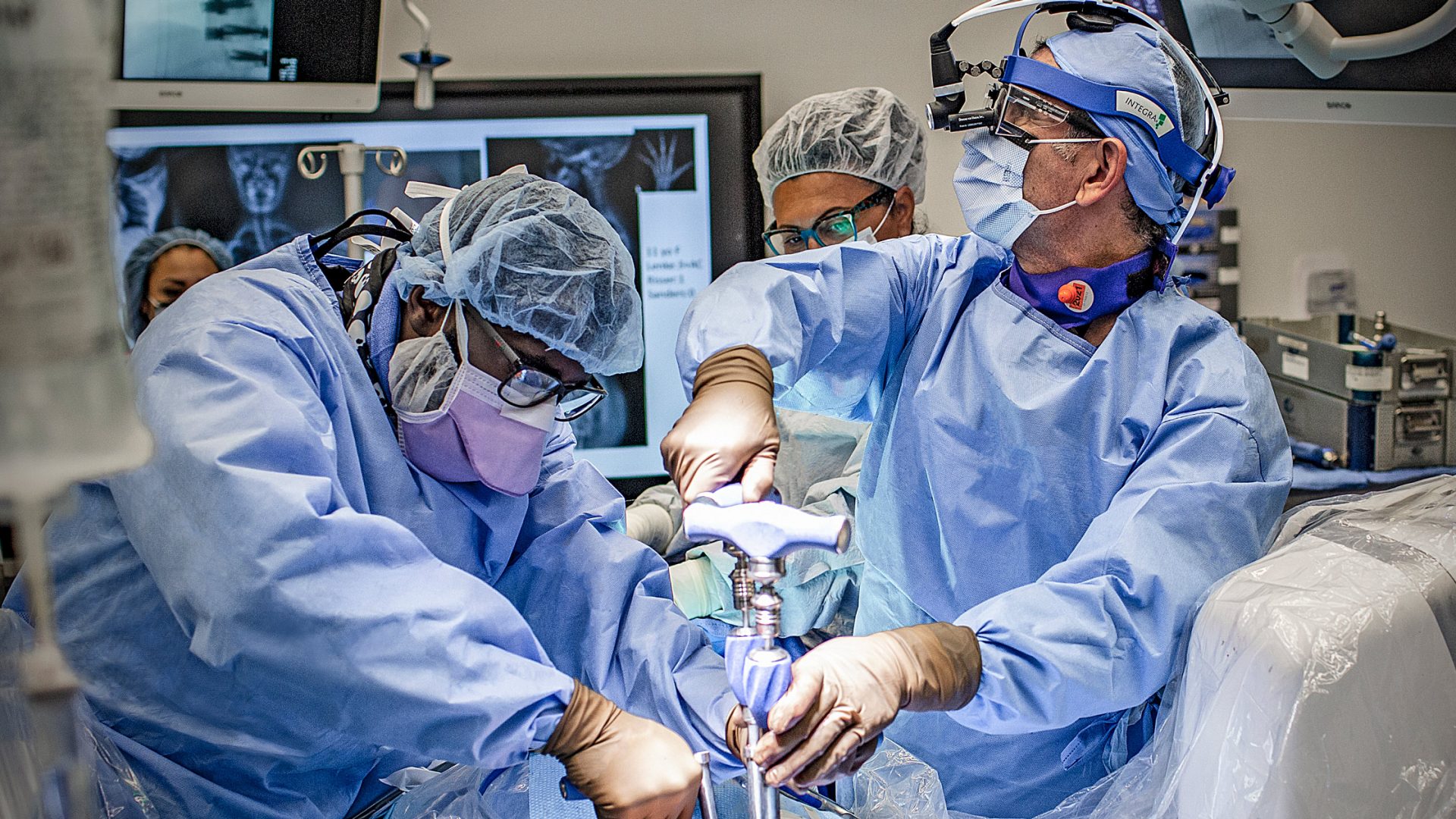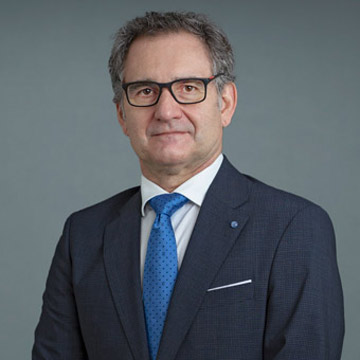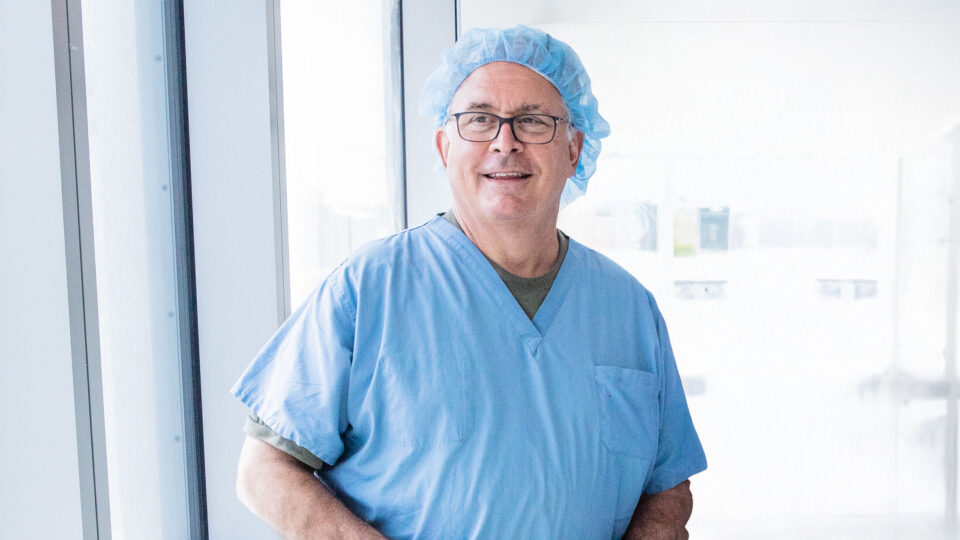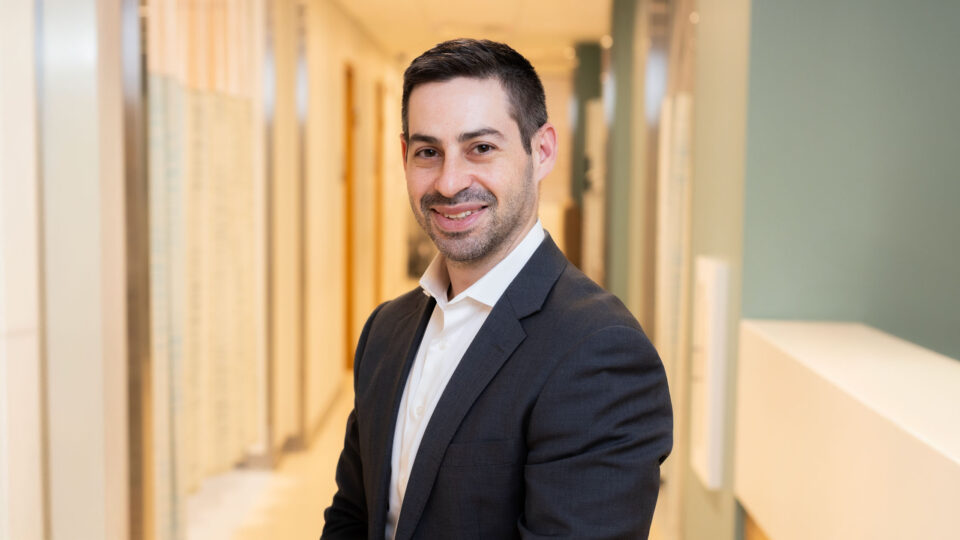For treating adolescent idiopathic scoliosis (AIS), orthopedic surgeons have long viewed posterior spinal fusion as the gold standard despite some significant drawbacks. “I’ve been doing scoliosis surgery for more than 20 years now,” says Juan C. Rodriguez-Olaverri, MD, PhD, clinical associate professor of orthopedic surgery. “We do a good job of correcting the spinal curves with fusion surgery, but the quality of life for patients is negatively impacted.”
Particularly among younger pediatric patients, the fusion technique can interfere with growth, motion, and flexibility and prevent their involvement in sports and other activities. Diagnosed with scoliosis himself at the age of 12, Dr. Rodriguez-Olaverri was fortunate to avoid surgery. The experience, though, inspired his career and dedication to helping maintain others’ quality of life.
A More Flexible Alternative
Introduced a decade ago, vertebral body tethering, or VBT, has rapidly developed into a viable alternative. Dr. Rodriguez-Olaverri’s expertise in VBT has helped advance the muscle-sparing method, which uses flexible polymer cords threaded through titanium screws attached to vertebrae on one side of the spine. The process, called growth modulation, pulls the spine into alignment as a child grows.
Dr. Rodriguez-Olaverri is one of the only surgeons to use the VBT procedure for early-onset scoliosis in patients as young as six years old, and to use CT imaging for precise titanium screw placement to minimize the risk during surgery. To improve the curve correction and minimize the risk of cord breakage, he is among the few surgeons to employ two cords with a double set of screws instead of a single cord.
“The idea with this technology is to let them move around,” says Dr. Rodriguez-Olaverri. “Maybe they’ll need a fusion when they’re older, but at least you’re giving them a good quality of life, they can continue to grow, the spine can continue to grow, and the lungs can continue to develop.”
“The idea with this technology is to let them move around … I had one patient who was dancing 18 days after her surgery.”
Juan C. Rodriguez-Olaverri, MD, PhD
Grateful families have sent videos of their children resuming the activities they enjoyed before the VBT procedure, often within four to six weeks. “I had one patient who was dancing 18 days after her surgery,” he says.
Comparing Results in Curve Correction
In addition to potential breathing and back problems from scoliosis, clinical data suggest that patients with an L5 tilt of more than 16 degrees are at higher risk for future disc degeneration if the tilt remains uncorrected. The VBT procedure has yielded good results in Dr. Rodriguez-Olaverri’s initial cases and may help prevent disc degeneration better than fusion, but the two techniques hadn’t been compared head-to-head.
He recently led a single-center retrospective cohort analysis of 41 patients with AIS. Among them, 21 underwent a VBT procedure and 20 received a posterior spinal fusion. The researchers used preoperative and postoperative radiographic analyses to measure differences in the patients’ main, secondary, and fractional curve Cobb angles and in the L5 tilt.
At two years postoperatively, the VBT cohort had significantly smaller fractional curve angles and L5 tilt, translating into a greater correction of the L5 tilt (-17.2 ± 10.2 versus -6.3 ± 6.9 degrees. The benefit of VBT over posterior spinal fusion was maintained even after propensity matching to account for demographic differences.
The results suggest that the VBT technique, which is better at preserving scoliosis patients’ range of motion, flexibility, and growth, offers an effective non-fusion alternative for correcting the spinal deformity. In addition, Dr. Rodriguez-Olaverri says, VBT may lead to fewer complications later in life by preventing degenerative changes—an added benefit he hopes to substantiate with further study through his clinical practice.






